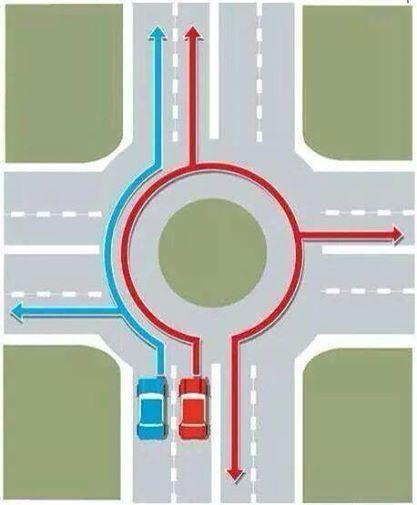In an era where economic growth and environmental sustainability often appear at odds, the recent analysis by ips-journal.eu titled “Driving in circles – Economy and ecology” delves into the intricate relationship between the two. As governments and industries grapple with balancing development and ecological preservation, the article sheds light on the cyclical challenges and potential pathways that define this ongoing struggle. This piece examines how current economic practices impact the environment and explores innovative approaches striving to harmonize these critical priorities.
The Hidden Costs of Circular Traffic Patterns on Urban Economies
Urban planners frequently adopt circular traffic patterns with the intent to streamline vehicle flow and reduce congestion. However, the reality often diverges as these roundabouts and loops can inadvertently escalate travel distances and times, leading to increased fuel consumption. This, in turn, inflates transportation costs for both private drivers and commercial logistics, indirectly burdening urban economies. Moreover, businesses face delayed deliveries and higher operational expenses, which can ripple through local markets, affecting pricing and competitiveness.
Beyond immediate financial strain, circular routes contribute to hidden economic detriments including:
- Increased vehicle wear and tear due to constant acceleration and deceleration
- Heightened air pollution exacerbating health-related public expenses
- Reduced workforce productivity caused by longer commute times
These factors combine to undermine the theoretical benefits that circular traffic designs promise, often making them less sustainable than anticipated. The table below illustrates a comparative estimate of additional costs per commuter attributable to circular traffic in a hypothetical mid-sized city:
| Cost Element | Annual Cost (USD) |
|---|---|
| Extra Fuel Expenses | 450 |
| Vehicle Maintenance | 200 |
| Lost Worktime | 700 |
| Total Additional Costs | 1,350 |
Environmental Impact of Prolonged Idling in Gridlocked Cities
In urban centers grappling with relentless traffic congestion, the environmental toll of prolonged vehicle idling is both significant and often underestimated. Engines running in place emit a steady stream of carbon monoxide, nitrogen oxides, and particulate matter, contributing to local air pollution that deteriorates public health. Cities locked in gridlock experience elevated levels of greenhouse gases, exacerbating climate change while burdening residents with respiratory ailments and reduced air quality. Beyond emissions, idling engines waste substantial amounts of fuel, straining urban economies and increasing the demand for fossil fuels.
Addressing this pressing issue requires integrated solutions that marry traffic management with environmental safeguards. Urban planners and policymakers are experimenting with:
- Smarter traffic light synchronization to reduce waiting times at intersections
- Encouragement of carpooling and public transportation to decrease the number of vehicles
- Implementation of idle-reduction technologies in vehicles
| Impact Type | Estimated Annual Cost | Proposed Mitigation |
|---|---|---|
| Fuel Waste | €1.2 Billion | Smart Traffic Signals |
| Health Costs | €800 Million | Promoting Public Transit |
| Greenhouse Gas Emissions | €950 Million | Idle-Reduction Tech |
Policy Measures to Mitigate Economic Loss and Reduce Emissions in Traffic Circles
To address the dual challenges of economic inefficiency and environmental impact in traffic circles, policymakers are increasingly focusing on innovative regulatory frameworks and infrastructure enhancements. Dynamic traffic management systems powered by AI can optimize vehicle flow, drastically reducing idling time and emissions. Additionally, incentivizing the use of eco-friendly vehicles within urban roundabouts through tax rebates or congestion charge exemptions encourages behavioral shifts toward greener transportation. Local authorities are also investing in better signage and lane markings that reduce driver confusion, which is a significant contributor to bottlenecks and subsequent fuel wastage.
A multipronged approach involves collaboration between urban planners, environmental agencies, and economic stakeholders to ensure that traffic circles evolve into smart mobility hubs. Key strategies include:
- Implementing adaptive traffic signals that react to real-time traffic density.
- Promoting carpooling and shared mobility services to decrease vehicle volume.
- Developing dedicated lanes for electric vehicles and bicycles to enhance flow and lower emissions.
| Policy Measure | Expected Economic Impact | Emission Reduction Potential |
|---|---|---|
| Smart Traffic Signal Systems | Up to 15% reduction in travel time | 20-30% less CO₂ emissions |
| Carpool Incentives | Decreased congestion costs | Reduced single-occupancy trips by 25% |
| EV & Bicycle Lanes | Boost in local green economy | Encourages 40% switch to non-polluting modes |
Concluding Remarks
As the debate over transportation policies intensifies, the intersection of economic growth and ecological responsibility remains a complex challenge. “Driving in circles,” as highlighted by ips-journal.eu, underscores the need for innovative solutions that break free from cyclical inefficiencies harming both the economy and the environment. Moving forward, policymakers and stakeholders must prioritize sustainable strategies that balance progress with preservation, ensuring that our roads lead not back to the beginning, but toward a future where economic vitality and ecological health go hand in hand.
